Madeleines (Classic French Recipe)
This recipe may contain Amazon or other affiliate links. As an Amazon Associate I earn from qualifying purchases.
These Madeleines are the classic French recipe for soft, delicate treats with a buttery texture, crispy edges, and lovely shell shapes, and they are ready in under 30 minutes!
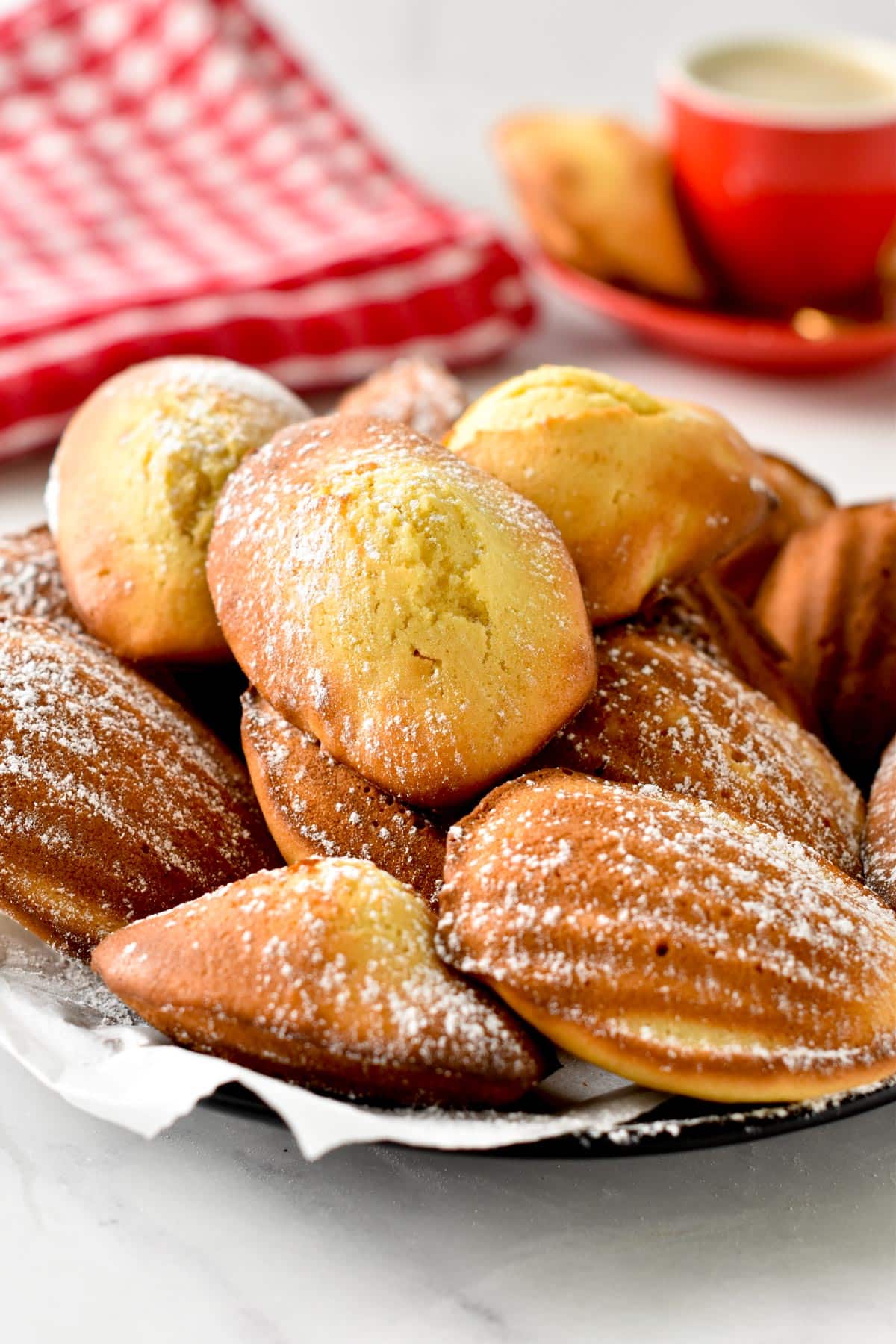
France has many regions (somewhat similar to US states) and each one has one or several traditional and very localized French recipes. Crepes are from Brittany, Ratatouille is from Marseilles, and the classic Quiche is from the Lorraine region.
French Madeleines are a popular, authentic regional recipe from Commercy, another city in the Lorraine region. This is widely considered the most popular French cookies. In France, it’s a recipe you learn to make as a kid, and this version is the no-fail recipe that everyone looking for a great easy French baking experience should try.
Madeleines are small French baked treats with a particular shell shape and hump in the middle. They are to the cookies what the Souffle Omelette are to classic omelettes, typically French. They taste like a butter cake with some hint of vanilla, lemon, or orange, depending on the recipe. They are originated from Eastern France, in the Lorrain Region, and often called Madeleine de Commercy.
Ingredients and Substitutions
The ingredients to make madeleines are pretty basic.
- All-Purpose Flour – While it might also work with gluten-free flour, I haven’t tried it. Expect the texture to be slightly denser with it.
- Eggs – I prefer using large free-range eggs.
- Milk – This recipe work with classic dairy milk or plant-based alternatives such as almond milk or coconut milk.
- Butter – Melted and cooled. I prefer grass-fed butter.
- Baking Powder – For the fluffy dough and the classic hump.
- Vanilla Extract or orange water, or lemon zest.
The best way to create a range of flavorsome madeleine cookies is to add different extracts to the batter. The most popular French flavors added to madeleine batter are:
- Orange Blossom Essence
- Rose Water
- Lemon Zest
You can add these flavors as an add-on to the vanilla extract or as a replacement for vanilla.
How To Make French Madeleines
Baking classic French madeleines is easier than you think. The trick is to have a madeleine pan and bake the recipe in two steps at two temperatures. But first, let me share with you all you need to make light, buttery madeleines.
- First, melt the butter in a small saucepan over medium heat, or bring the butter into a microwave-safe bowl.
- Microwave for 30 seconds until melted. Set it aside to cool down.
- Next, beat the eggs and sugar in a large mixing bowl until the color gets whiter and the texture is pale, and foamy. It’s called the ribbon stage of egg beating. You can use a hand whisk or stand mixer with the whisk attachment. Set the stand mixer on medium speed and whisk the egg mixture for about 2 minutes until pale, light, fluffy and foamy.
- Stir the milk and vanilla together and fold them into the batter. Gradually add the flour and baking powder and stir halfway.
- Pour the melted butter into the bowl with the flour mixture. The madeleine batter should be quick, liquid, and runny, and that’s what you want.
- Let the batter rest for 15 minutes in the fridge. Chilling the batter before baking helps the madeleines rise in the center and form their signature hump.
- Preheat the oven to 460 °F (240 °C). High oven temperatures are the secret to making perfect madeleines. Their particular shell shape with a bumpy center comes from the high temperature of the first bake.
- Lightly oil a Madeleine pan with butter or avocado oil.
- Fill each madeleine shell up to 3/4 of their level. The madeleines will rise, so don’t fill their hole to the top, or they will overflow.
- Bake on the center rack of the oven for 5 minutes at 460 °F (240 °C). Then, reduce to 350 °F (180 °C) and keep baking for an extra 5 minutes.
- The madeleines are fully baked when they are golden brown, show a lovely bumpy shape in the center and a pick inserted in the middle comes out clean.
- Unmold each madeleine cookie and release it on a wire rack with its hump up to cool down.
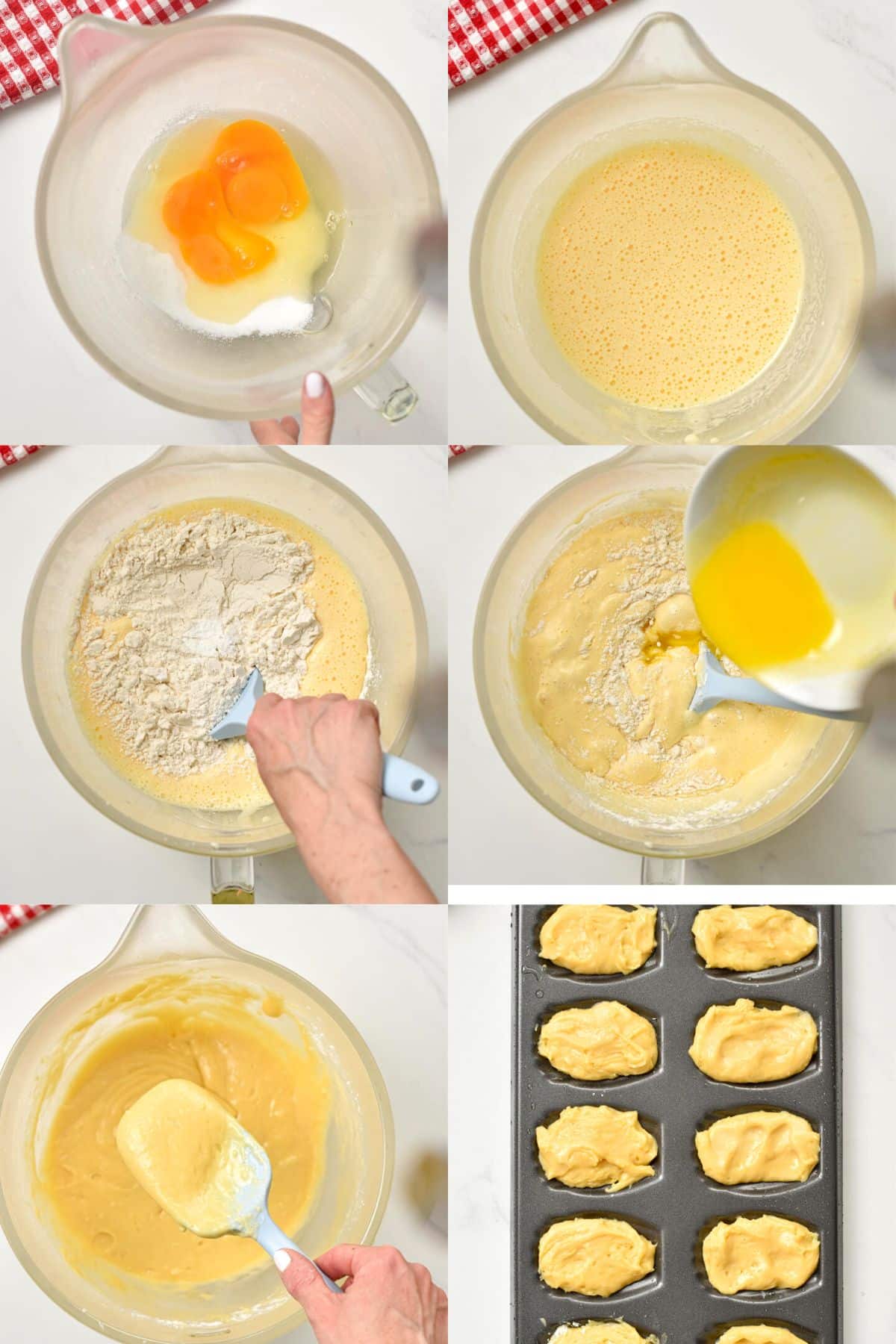
Storage Instructions
Madeleine cookies can be stored for two days at room temperature or for up to 5 days in a sealed cookie box in the fridge. You can freeze baked madeleines in Ziploc bags and thaw them at room temperature the day before. They last for up to one month in the freezer.
Serving Suggestions
French people don’t decorate madeleines. We eat them plain with a cup of tea or coffee. They are a kid’s favorite after-school snack in France, and we often add flavor to the madeleine batter rather than decorating them.
You can have taste and flavors by adding:
- A dust of powdered sugar
- A chocolate shell. Dip the shell into melted white chocolate or melted dark chocolate. Let it cool down in the fridge to harden the shell.
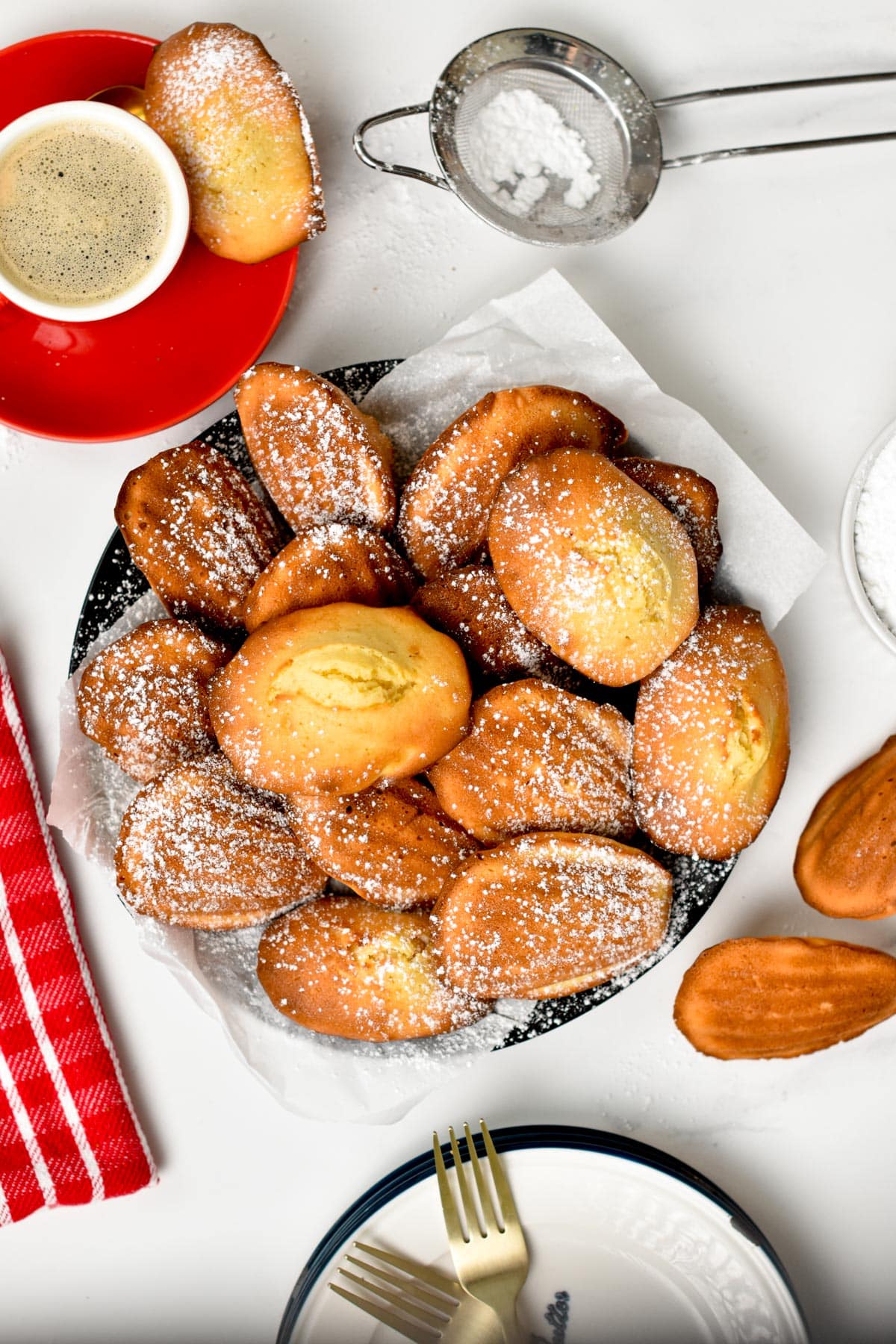
Allergy Swaps
Below are some ideas to make the recipe if you are allergic to some of the ingredients:
- Egg-Free – Some store-bought egg replacers might work, but the color and texture will differ.
- Dairy-Free – Replace the butter with margarine. Any plant-based milk, like soy milk, oat milk, or almond milk, will work.
- Sugar-Free – You can use sugar-free crystal sweeteners, like erythritol, to make sugar-free madeleines.
Frequently Asked Questions
Below are the answers to the most common questions about baking madeleines.
Madeleines taste like tiny butter cakes, with a lovely funny shell shape that shows a particular bump, the madeleine hump. They have a vanilla flavor or orange flavor if orange blossom essence has been added to the batter.
If you don’t have a madeleine mold, a mini muffin pan will be the best to ensure a lovely raise in the center. If the muffin holes are too broad and large, they come out flat and dry.
French people eat madeleines as a quick snack, as afternoon tea, or even for breakfast. You’ll find that dunking madeleines into coffee or hot chocolate is a delicious way of eating these French treats.
No, the classic madeleine recipe is not gluten-free. It uses regular all-purpose flour.
Yes, you can use this recipe to make madeleines in a mini muffin pan, or in a pan made for peanut butter cups.
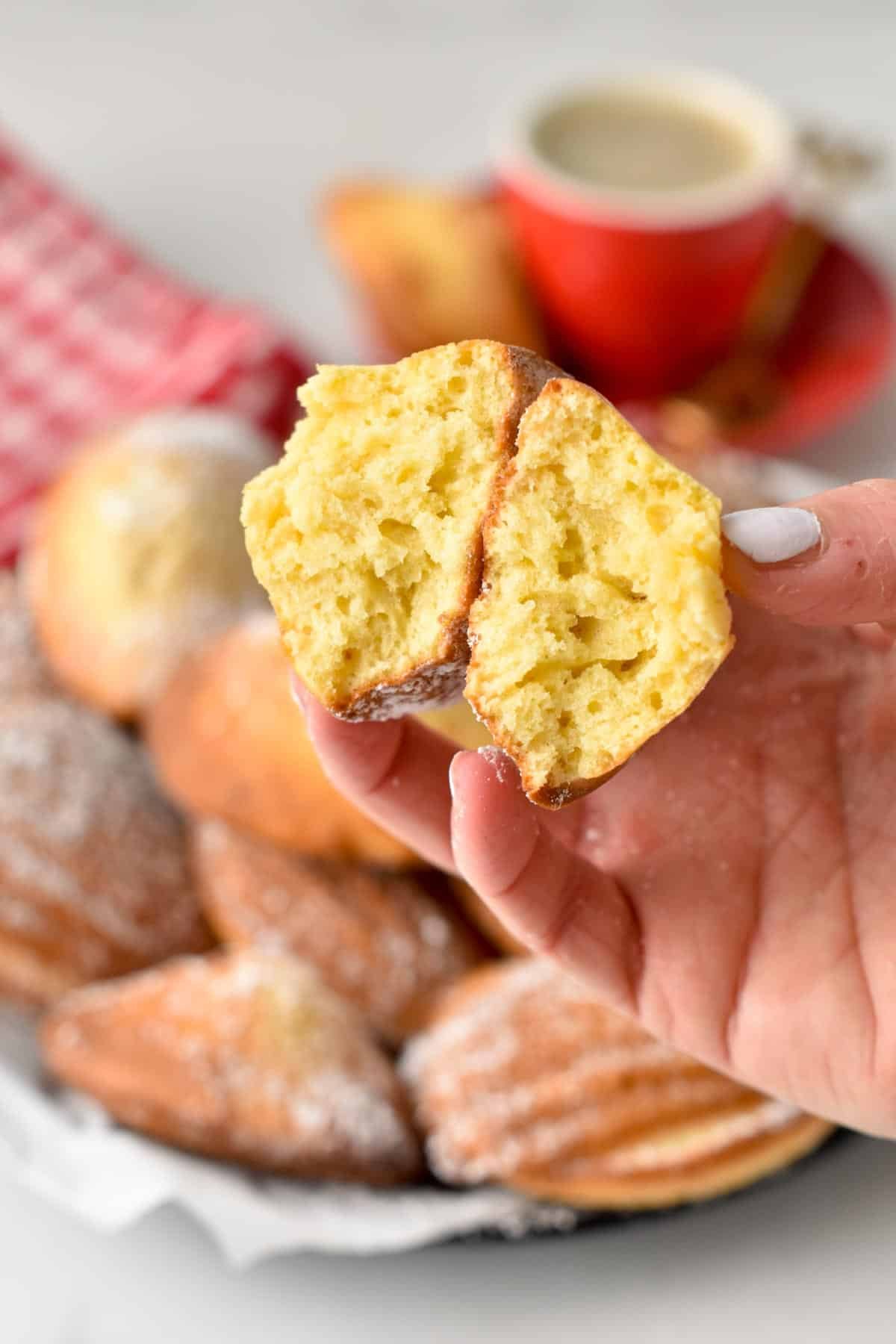
More French Recipes
Below are some more French-inspired recipes for you to try:
Did You Like This Recipe?
Leave a comment below or head to our Facebook page for tips, our Instagram page for inspiration, our Pinterest for saving recipes, and Flipboard to get all the new ones!

Madeleines
Ingredients
- ½ cup Butter 1 stick, melted, cooled
- 3 Eggs
- ¾ cup Sugar
- 2 tablespoons Milk
- 1 tablespoon Vanilla Extract or orange flower water
- 1 ¾ cups All-Purpose Flour
- ½ teaspoon Baking Powder
Instructions
- Pour the butter into a small non-stick saucepan and bring it to medium heat. Stir to melt it. Remove from the heat. You can also add the butter to a microwave-safe bowl and microwave it in 30-second bursts until fully melted. Set it aside to cool.
- In a large mixing bowl, add the eggs and sugar. Using an electric beater, beat on high speed for 3-4 minutes or until foamy, pale, and light in color.
- Add milk, vanilla extract, flour, and baking powder and stir gently to combine and form a smooth cake batter. Just before the end, stir in the melted butter.
- The batter should be yellowish, slightly thick, and smooth.
- Refrigerate for 15 minutes. The batter will thicken in the fridge, but this step guarantees a lovely madeleine hump.
- Preheat the oven to 460 °F (240 °C). Slightly grease a madeleine pan with oil spray. Set it aside.
- Remove from the fridge, and fill each madeleine hole up to 3/4 their level, not up to the top!
- Bake the madeleines for 5 minutes at 460 °F (240 °C), then reduce heat to 350 °F (180 °C) and keep baking for 4-5 minutes or until golden brown and a pick inserted in the center comes out clean.
- Let them cool down on a wire rack for a few minutes before serving.
Notes
Want My Kitchen Equipment?
Nutrition
Disclaimer
The recipes, instructions, and articles on this website should not be taken or used as medical advice. The nutritional data provided on Sweetashoney is to be used as indicative only. The nutrition data is calculated using WP Recipe Maker. Net Carbs is calculated by removing the fiber and some sweeteners from the total Carbohydrates.
You should always calculate the nutritional data yourself instead of relying on Sweetashoney's data. Sweetashoney and its recipes and articles are not intended to cure, prevent, diagnose, or treat any disease. Sweetashoney cannot be liable for adverse reactions or any other outcome resulting from the use of recipes or advice found on the Website.
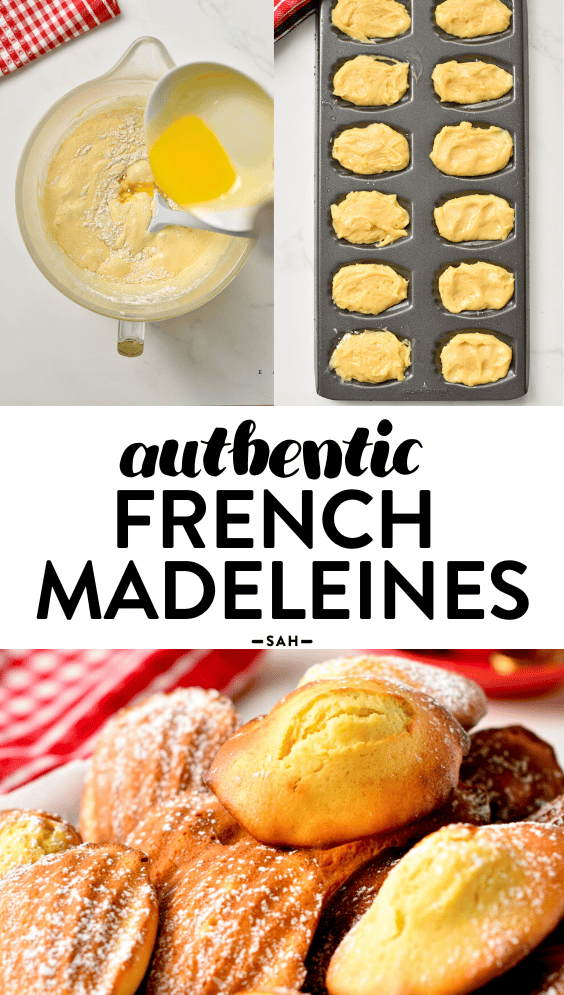
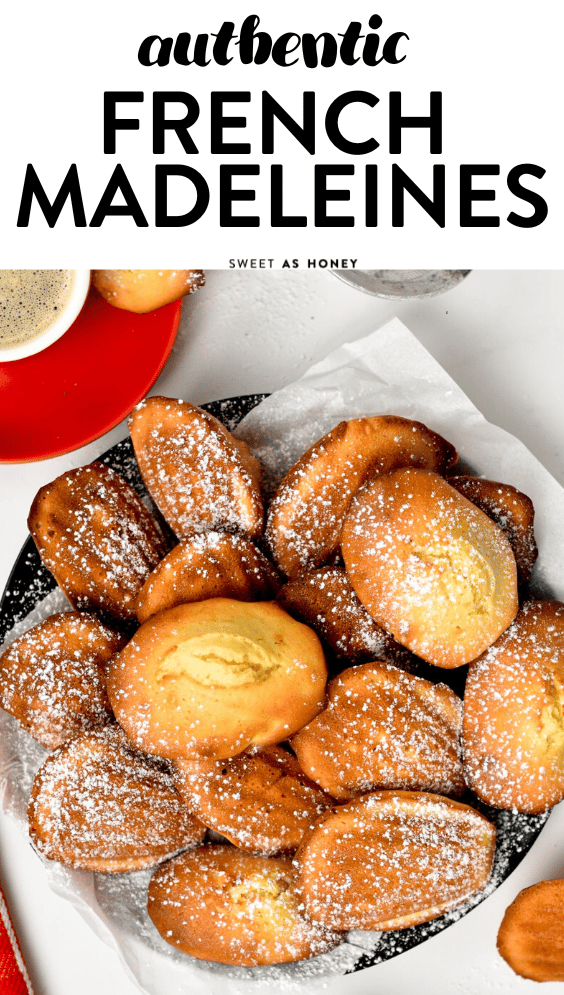
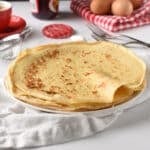



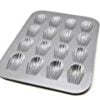
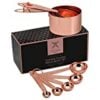
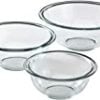




Share this post!
If you enjoyed this post, share it with your close ones!
Leave a comment